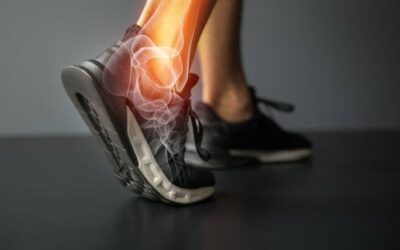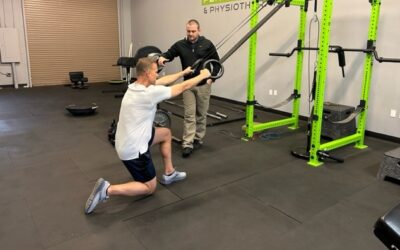 Have you ever had a pulled muscle?
Have you ever had a pulled muscle?
Chances are you have.
And once you do, boy you feel it!
When you pull a muscle the pain can range from mild, like a minor tightness/stiffness when you get up in the morning, to very severe, such as “throwing your back out” that leaves you unable to walk for days.
Just last week I had a patient come to me in agony because of a pulled muscle.
He hobbled in, barely lifting and extending his leg as he walked, and asked:
“What do you do when you have a pulled muscle?
I was playing a game of football with my son and I took off to go tackle him, something ‘went’ and I couldn’t move. I can still barely walk!…
…What can I do to get rid of this pain quickly?!”
This man was a wreck. Every step he took made him wince his face in agony.
And I know what that’s like…
Actually, few months ago, I had tried to get into my truck without stepping in a puddle that formed under the driver door. I went to make a big step to avoid the puddle and immediately felt a tightness in my hamstring. It was so bad for the first day or two that I actually would only go up/down stairs with the non-painful leg.
That’s right – I pulled a muscle from stepping over a puddle. Let’s just say my wife was very amused and still reminds me of that time on occasion.
And as embarrassing as it was, pulling my hamstring from just taking a large step makes sense.
I stretched out the hamstring as far as it could go and forced it to generate power to try and pull me into my truck. This is not a typical outstretched position I put my body in to begin with, but force development at that position is tough.
One of the most common types of “pulled muscle” occurs with whiplash…
The sudden rapid back and forth movement of the neck causes strain to the neck muscles, leaving you feeling achy, and your neck too painful to turn properly.
The same happened with this gentleman who walked into the clinic who strained his hamstring badly from running after his kid. His muscles weren’t prepared and warmed up properly, so the sudden quick movement of taking off after his kid came as a shock to his body, straining the hamstring.
You don’t have to be a weightlifter, Olympic sprinter, or be carrying anything heavy to pull a muscle…
Simple things like sneezing, turning your neck suddenly, sleeping in an awkward position, moving to pick something up or even reaching for something that’s in a weird spot – are just a few examples of simple things you can do every day to pull a muscle.
And believe me when I say, when you pull a muscle, usually you’ll know it right away.
You might experience a sudden onset of pain, soreness, bruising, stiffness, swelling, a limited range of movement, muscle spasms, just to name a few.
So, the big question is, what do you do when you have a pulled muscle?
Do you use ice or heat? Maybe you rest, or keep moving? Perhaps you get a physical therapist to take a look?
Let me start off by saying that no matter if it is mild or severe, having a strained muscle looked at by a professional is paramount to full recovery and returning to your active lifestyle. All while decreasing the risk of it happening again.
If it’s a mild strain, I would follow these steps:
As soon as you know you’ve pulled a muscle – I recommend you use the tried and tested ‘RICE’ method.
Note that this is a treatment protocol recommended to do in the first 24 hours…
So, “R” – this stands for “Rest”.
This may seem obvious, but you would be surprised. This means stop doing the thing that aggravated it in the first place. So many times I hear, mostly dad’s, say that they hurt it running one day and tried to run again the next day. Don’t push through an injury, you could make it worse and the recovery time longer!
Next step – “Ice”.
A lot of people ask – “When do I use ice, and when do I use heat?”…
Well, the sooner you apply ice, the better! Ice the injured area for 20 minutes on, 20 minutes off, and do this up to 3 times.
Ice provides pain relief and helps minimize swelling. Which is the primary purpose of ice – to reduce swelling.
This could help in the short term, maybe 1-3 days following the injury. I always tell my patients you can use ice, but the primary way ice works is by offering some pain-relief.
Next, “Compression”.
You can try applying a soft bandage around the area. The compression can help with swelling and helps your body realize something is there and needs to be protected while healing. Obviously, this is not relevant in all cases.
Lastly – “Elevation”.
If possible, try to keep the injured muscle elevated, above the level of your heart. This will help reduce swelling. This won’t be possible in all cases, so only do this if you can.
THESE AFOREMENTIONED GUIDELINES ARE FOR 24 HOURS FOLLOWING THE INJURY. I have to state this because people tend to use these guidelines for weeks and months. It is imperative to get moving as soon as possible. These should be light/gentle movements to begin with. If anything you’re doing causes severe pain – stop immediately.
Another fallacy with muscle strains: You need to go to a pharmacy for the “magic cure”.
Searching for a miracle pill, rub, or ointment is not recommended for muscle strains. Those may be “band-aids” that actually hinder your progress.
In Summary: If you are experiencing a pulled muscle, try the “RICE” method first. Although this most certainly doesn’t guarantee a fix, it’s proven to help ease the pain symptoms and prepare you for active recovery.
If you’ve got any muscle or sports injuries right now, feel free to reach out to set up a free consultation. Don’t let muscle strains sideline you.




